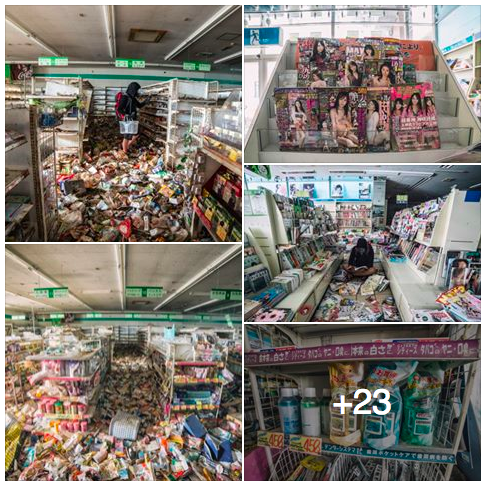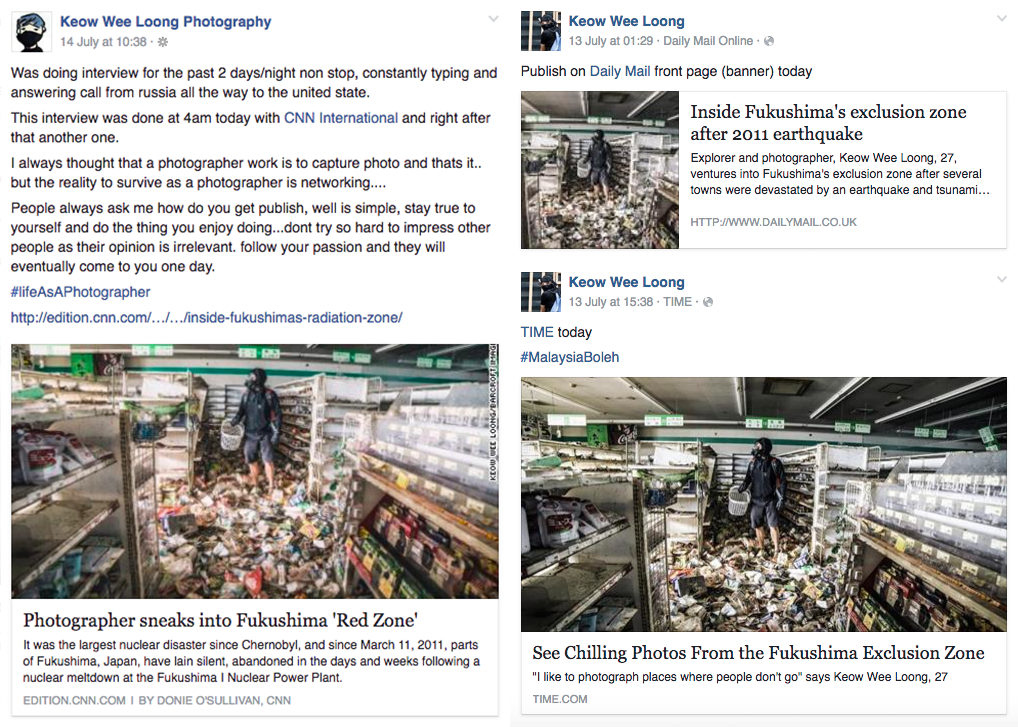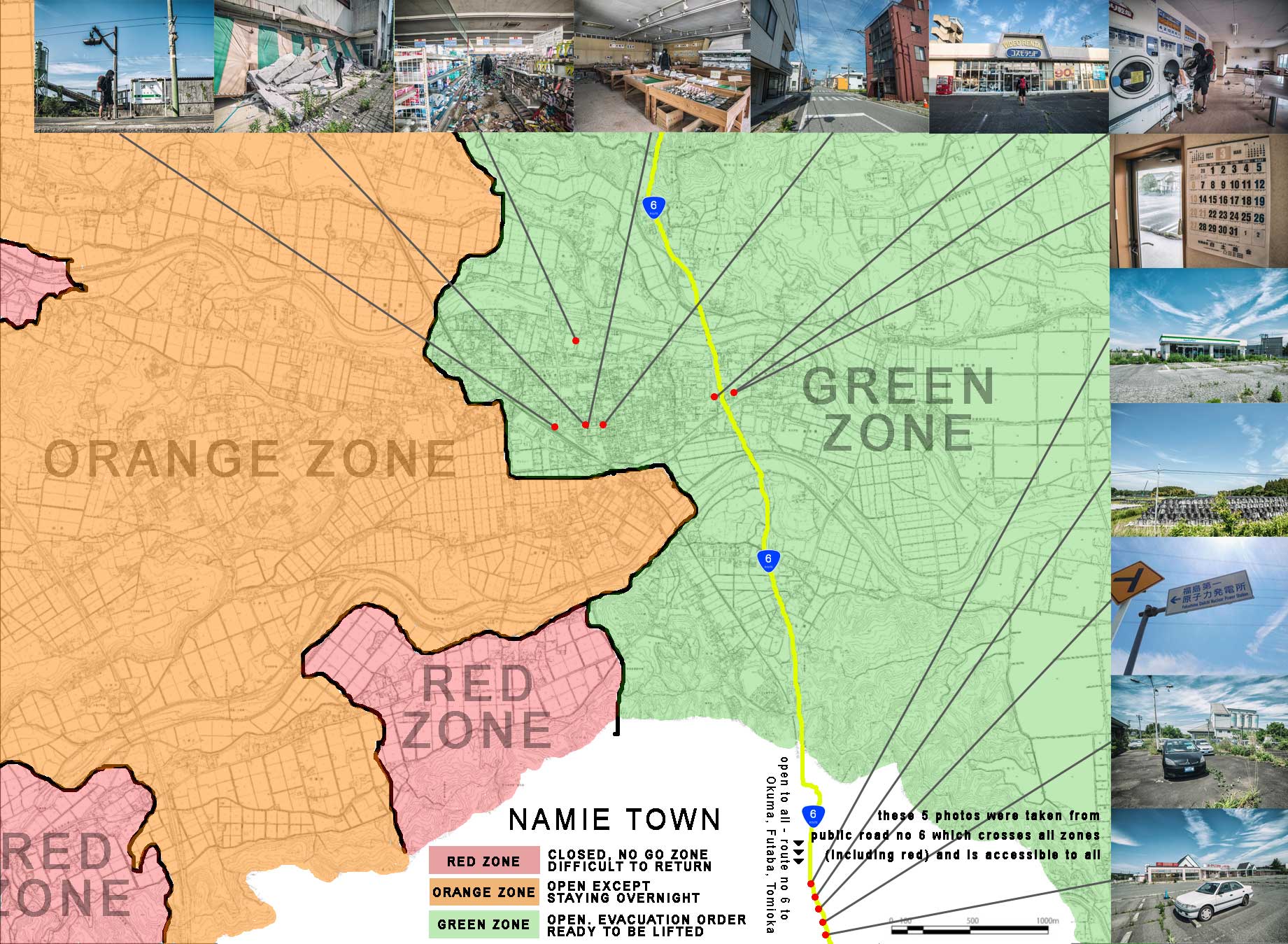Did The 'Fukushima Photographer' Fabricate His Story About Walking Into No-Go Zones?
Malaysian photographer Keow Wee Loong continues to come under fire for his recent trek into the Fukushima exclusion zone.
Malaysian photographer Keow Wee Loong's photos from the Fukushima exclusion zone has been a hot topic of discussion among Malaysians and worldwide spectators alike since the pictures went viral in the past week
A screenshot of some of the photos published by Keow on 10 July 2016.
Image via Keow Wee Loong FacebookWidespread attention from all over the world led to coverage from international news outlets such as CNN, TIME Magazine, Daily Mail UK, and Mashable, to name a few
Keow has also received countless critical comments in regards to his photos, particularly from the Japanese community, who felt that his "sensationalised" photos are disrespectful to the victims of the disaster
In a post titled 'An Open Letter to the “Fukushima Exclusion Zone” Photographer, Keow Wee Loong', the writer included a comment from a resident of Fukushima who said:
"Not only is what he did illegal, but extremely disrespectful to victims of the disaster who had no choice but to leave their homes. Additionally, his post is full of misinformation about the disaster, radiation, and much more, specifically aimed at promoting the sensationalist image of Fukushima, rather than the truth.”
Keow was also chided for entering the exclusion zone without proper permits as well as not donning protective gear.
However, the most damning piece of criticism came from Polish photographer Arkadiusz Podniesiński, who alleged that Keow did not actually step foot into Fukushima's red zones to take those photos
Podniesiński also mapped out the sites where Keow is said to have taken his photos in.
Image via Arkadiusz PodniesińskiIn a blog post, Podniesiński, who has visited Fukushima several times to photograph the aftermath of the nuclear disaster, wrote that Keow's photos were actually taken in the open green zones (which have been open and accessible to all) and not the red a.k.a. no-go zones as he'd claimed to do so.
"The green zone in the town of Namie, where the photographer took most of his pictures, have had this status for at least three years and have been open to all since 1 April of this year. In Tomioka, where Keow Wee Loong also took photographs, these zones were open even earlier. Anyone who wished could enter them freely already a few years ago," Podniesiński wrote.
"Radiation in the centre of Namie is approximately 0.1 uSv/h, and is therefore normal; it does not differ from most other cities in Japan and around the world. One doesn’t need a gas mask there, much less a full-face one. It isn’t necessary to hide from the police or hike through the woods for hours to get to Namie or Tomioka. Anyone who wants to can go there without permission."
While Podniesiński admits that he is a strong opponent of nuclear energy, he thinks that photographers and writers have a duty in giving accurate information to the public, which he said Keow did not do with his photos
"My interest is not to trivialise the catastrophic consequences of the failures of nuclear power plants. During [the eight years spent in Chernobyl and some in Fukushima], I have seen the effects of nuclear disasters enough to be opposed to this form of energy production.
I am, however, a strong opponent of seeking sensationalism, 15 minutes of fame and the money that comes with it, which has become synonymous for me with Keow Wee Loong. Photographers and writers of unreliable and inaccurate texts, which are then replicated by hundreds of media outlets around the world," Podniesiński wrote.
The Polish photographer has also included Google Street links to the sites he alleged Keow had actually taken his photos in. You can view them from his full blog post here.
In response to Podniesiński's allegations, Keow posted a comparison of the Polish's radiation zone map to his own GPS marks as well as those provided by Greenpeace and Huffington Post Japan on Facebook
Keow also revealed that Podniesiński had previously contacted him to pinpoint the locations he had visited as the Polish couldn't identify all of them. He also highlighted that Podniesiński did not indicate that the locations in the white areas were actually included in the red zones.



